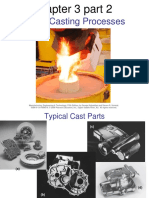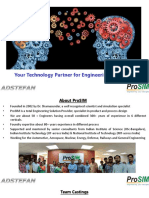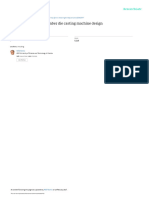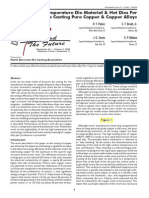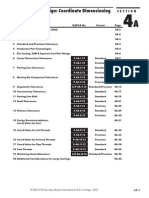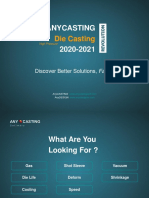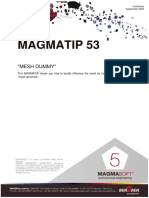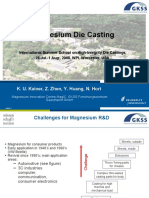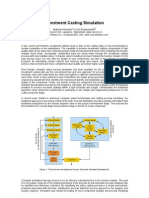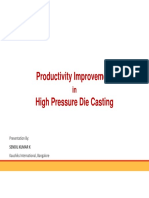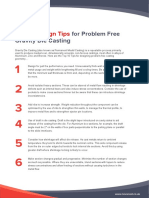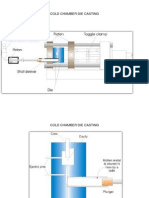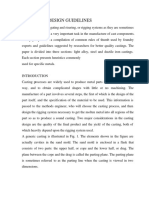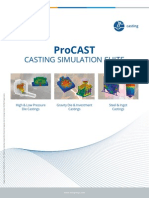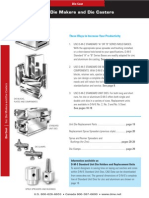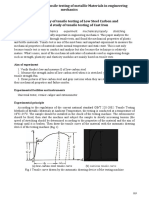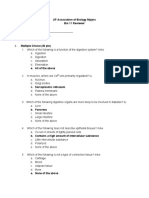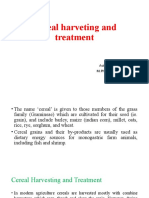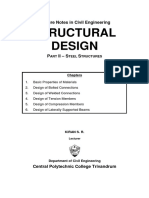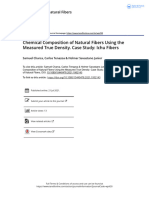Chapter 1
Introduction
Casting processes are among the oldest (around 5000 B.C.) methods for
manufacturing metal goods [1]. In most of the early casting processes, some of which
are still applicable today, the used moulds were destroyed in order to remove the
solidified part from it. Need for a permanent mould that could be used repeatedly to
produce components in large quantities was the obvious alternative. The die-casting
process which uses a permanent mould, dates back to the mid 1800s, when a patent was
awarded to Sturges in 1849 for the first manually operated machine for casting printing
type [2]. This manually operated machine provided a direction to develop an automated
die-casting machine over the time. Doehler [3, 4] is credited with pioneering the
development of automated die-casting process for the production of metal components
in high volumes that uses a permanent metal mould, which is also known as the die.
Today, the die-casting processes are used to produce over one-third of all metal castings
[2].
The die-casting process is mainly divided into two categories; gravity die-
casting (GDC) and high pressure die-casting (HPDC). The GDC is mostly used for
manufacturing of thick walled, heavier section parts, and uses gravity instead of high
pressure, to fill the molten material into a die. HPDC is a fully automatic process for
production of complex, thin walled castings, with part weights ranging from a few
grams to more than 15 kg [1]. HPDC process is used across the world by the
metalworking industry; the process involves injection of the molten metal into a die
under high pressure of up-to 300 MPa. The die-casting process will continue to grow as
1
�the manufacturers strive to decrease the weight of their products. The research issues
addressed in this thesis primarily address die-design activities for the part produced
using HPDC process. For the reason of brevity, the term ‘die-casting’ instead of
‘HPDC’ is used throughout this thesis.
A die-casting die is an essential component in the die-casting process, which
provides a shape to the produced part. Design of a die-casting die is very time-
consuming and non-trivial process that requires domain knowledge and vast experience
of a die-designer, besides information about manufacturing resources, delivery time and
cost preferences. Nowadays, computer-aided design and manufacturing tools are
extensively used in the die-casting process at different stages, such as part design, die-
design and manufacturing. The role of computer-aided design (CAD) tools has
facilitated to achieve greater levels of automation in various activities of the die-casting
die-design. Inspite of the use of CAD tools, the requisite system support in several
activities of the die-design is lacking. Some of these activities are cavity layout design,
gating system design, and core-cavity design. In case of multi-cavity die-casting dies,
which are commonly used in the die-casting industry, the level of complexity of
different aspects of die-design decisions increases manifold when compared to the
design of a single cavity die. The desired level of system support therefore is even more
demanding incase of multi-cavity die-casting die-design. The work presented in this
thesis addresses research issues of the computer-aided die-casting die-design with
special emphasis on multi-cavities. Rest of this chapter introduces the die-casting
process in detail, summarizes the industry requirements and provides an overview of
the research issues addressed in the thesis.
This chapter is organized into the following sections. Section 1.1 discusses die-
casting process with basic terminology and die-casting machines. Section 1.2 discusses
2
�role of computer-aided design and manufacturing in the die-casting process. Section 1.3
discusses die-casting die-design issues. Section 1.4 discusses need and motivation for
the thesis. Section 1.5 discusses overview of the thesis. Lastly, Section 1.6 discusses
organization of the thesis.
1.1 Die-Casting Process
The die-casting process is a fast and cost-effective manufacturing process,
which is used for production of high volume, near net-shaped, tight tolerance metal
components. It has the benefit of good quality and repeatability, often at lower costs as
compared with other casting processes. The die-casting process typically uses a non-
ferrous alloy, such as aluminum or zinc, which is melted in the furnace and then
injected into the die; the die is installed on a die-casting machine. The injected molten
metal solidifies rapidly (from milliseconds to a few seconds) to form a near net-shaped
component that requires no or little machining. Cycle times for the process vary from
10 seconds for small components manufactured in small machines to 200 seconds for
large components made in large machines. There are two main types of die-casting
machines - hot chamber machines (used for alloys with low melting temperatures, such
as zinc) and cold chamber machines (used for alloys with high melting temperatures,
such as aluminum).
The die-cast components are widely used in the automobile, aerospace,
electronics and household appliances, due to their high strength and low weight. The
typical examples of aluminium products made by the process are automotive
transmission cases, engine blocks, carburetors, crank cases, magnetos, handle bar
housing, zip fasteners, and head lamps.
The die-casting die is said to be back-bone of die-casting process, and greatly
influences the cost, rate of production and quality of the parts produced. A die-casting
3
�die consists of two mould halves known as core and cavity. One of the die-half, which
remains stationary during the process is called cavity half (or cover die), and the other
half, which is movable, is called core half (or ejector die). These two mould halves
when assembled form a negative impression of the part, which is filled with the molten
metal at high pressure. After solidification of the molten metal, these mould halves are
separated and the die-cast component is ejected with the help of an ejection mechanism.
The die is internally cooled with a coolant to remove heat dissipated by the process.
Sometimes, the die-cast part has an undercut feature, because which the die may require
a side-core. An undercut feature is that region of the part, which is neither accessible by
the core nor the cavity. Figure 1.1 shows die-casting process with the basic
terminology. The definitions of important die-casting terms are given in the Appendix-
II.
Side Core
Side Core
Parting Line
Withdrawal
Direction
Parting
Direction
Undercut
Cavity Half
Part
Core Half
Fig. 1.1: A snapshot of the die-casting die terminology
There are four types of dies which are generally used in the die-casting process [5]:
4
� Single cavity: A single cavity die has only one impression of the part in the die,
and therefore can produce one part in a die-casting cycle.
Multi-cavity: A multi-cavity die has a number of identical impressions of the
part. A multi-cavity die is useful to produce a number of parts in a die-casting
cycle.
Unit die: A unit die has a number of impressions on a die-base, which are not
identical. A unit die is useful to produce a number of different parts in a die-
casting cycle [5].
Combination die: A combination die also has a number of non-identical
impressions on a die-base to produce a family of parts for an assembly in a die-
casting cycle [5].
Scope of this thesis is limited to single-cavity and multi-cavity dies only, which
are most frequently used in the industry. The unit die and the combination die are out of
scope of the present thesis. Figure 1.2 (a) and Fig. 1.2 (b) show snapshots of single
cavity and multi-cavity die-casting die respectively.
(a) (b)
Fig. 1.2: (a) Single cavity die-casting die [5] (b) Multi-cavity die-casting die (with six
number of cavities [5]
5
�1.1.1 Die-casting machines
A die-casting machine provides the clamping mechanism to hold the die halves
together when they are subjected to high pressure loads from the incoming molten
metal. They also provide the injection mechanism that injects the molten metal into the
die cavity at required velocity and pressure. Die-casting machines are typically rated
based on the clamping force it can generate; typical machine clamp force ranges from
40 tons to 4000 tons. Regardless of their size, die-casting machines are usually
classified as hot chamber machines or cold chamber machines, which are discussed in
the following paragraphs.
Fig. 1.3: Schematic of a hot chamber die-casting machine [6]
In a hot chamber machine (shown in Figure 1.3), the injection mechanism is
immersed in the molten metal bath of its metal holding furnace. The furnace is attached
to the machine by a metal feeding system called gooseneck. As the injection cylinder
6
�plunger rises, a port in the injection cylinder opens, allowing the molten metal to fill the
cylinder. As the plunger moves downward, it seals the port and forces the molten metal
through the gooseneck into the die cavity. Hot chamber machines are primarily used for
low melting point alloys, such as zinc and copper that do not readily attack and erode
the components of machine’s injection system.
Fig. 1.4: Schematic of cold chamber die-casting machine [6]
In a cold chamber machine (shown in Figure 1.4), the molten metal is poured
into a cylindrical shot sleeve and a hydraulically operated plunger seals the cold
chamber port and forces the metal into the die at high pressures. Cold chamber
machines are used for alloys such as aluminum and magnesium that have high melting
point.
A typical die-casting machine consists of a cover or stationary platen, a movable
or ejector platen, a rear platen and four tie bars stretching between the cover and rear
platens. The tie bars are secured to the cover and rear platens, and the ejector platen is
7
�free to slide on the tie bars. The cover and ejector halves of the dies are mounted on the
cover and ejector platens of the die-casting machine respectively. The toggle
mechanism that clamps the dies together is provided between the cover and rear platens
and the injection mechanism is provided behind the cover platen.
1.1.2 Die-casing process cycle
The typical die-casting process cycle consists of four steps, namely clamping,
injection, cooling, and ejection. Figure 1.5 is an illustration of the process cycle using
the cold-chamber die-casting process. The steps of the die-casting process cycle are
briefly described below:
(a) (b)
(c) (d)
Fig. 1.5: An illustration of the process cycle for cold chamber die-casting [7]
8
� i. The die is closed and the molten metal is ladled into the cold-chamber shot
sleeve. (please see Figure. 1.5 (a))
ii. The plunger pushes the molten metal into the die cavity where it is held under
pressure until solidification. (please see Figure. 1.5 (b))
iii. The die opens and the plunger advances to ensure that the casting remains in the
core half of the die. The side-cores, if any, retract. (please see Figure. 1.5 (c))
iv. Ejector pins push the casting out of the core half of the die and the plunger
returns to its original position. (please see Figure. 1.5 (d))
1.2 Role of Computer-Aided Design and Manufacturing in the Die-
Casting Process
Computer-aided design (CAD) can be defined as the use of computer systems to
assist in the creation, modification, analysis, or optimization of a design [8]. Computer-
aided manufacturing (CAM) can be defined as the use of computer system to plan,
manage, and control the operations of a manufacturing plant through either direct or
indirect computer interface with the plant’s production resources [8].
These days CAD and CAM tools (or CAD/CAM as they are commonly called
together) are extensively used in almost all types of industry, and their role is becoming
increasingly unavoidable. The largest users of CAD/CAM are electronics, aerospace,
and automotive industries [9].
These techniques of CAD and CAM have been developed so that computers
play major role in the design and manufacturing domains respectively. Integration of
CAD and CAM has the potential to provide greater benefits in the design and
manufacturing of products. The idea of achieving larger integration between CAD and
CAM and other downstream issues, such as inspection is to reduce the human
9
�interaction and provide system support as much as possible, which is in addition to
other important benefits. The other important benefits derived by CAD and CAM
integration are: (i) productivity improvement in design, (ii) shorter lead times [8], (iii)
greater accuracy in design calculations, (iv) standardization of design, drafting and
documentation procedure, (v) reduced data redundancy, (vi) generate NC program
automatically [9, 10], (vii) better product planning and control [11], and (viii)
application in product forecasting.
In die-casting industry also, CAD/CAM tools are being extensively used at
various stages, such as part design, several steps of the die-design process, design
validation, analysis, process planning, and die manufacturing.
The design of a die-casting die is a crucial step in between the design of a part
and its subsequent manufacturing. The research focus of the thesis, computer-aided
design of multi-cavity die-casting dies from part product model, constructs a valuable
bridge for achieving design-manufacturing integration for the die-casting process.
Important steps of the die-casting die-design and manufacturing with role of
CAD/CAM tools at each step are shown in Figure 1.6, which are briefly explained in
the following paragraphs.
The die-design activities instantiates from the design of part, where CAD tools
are used to make its part product model.
Various die-design steps such as layout design, gating system design, parting
design, side-core design, cooling design and ejection system design require
CAD and CAE tools.
When the design of a die-casting die is ready, CAE tools, such as filling
simulation are used for its validation.
10
� Die-Casting Die-Design Activity Type of CAD/CAM Tools Used
Product Geometrical Modeling
Design (using CAD Tools)
Initial Die Design
Shrinkage and Draft
Layout Design
Cavity Number and Layout
Geometrical Modeling
Gating Design (using mould design
Gate, runner & Overflow modules of some CAD
tools)
Parting Design
Parting Line and Core/Cavity Blocks
Side-Core Design
Geometrical Modeling and
Engineering Analysis
Cooling Design
(using CAD/CAE Tools)
Ejector Design
Geometrical Modeling
(using CAD Tools)
Standard Component Design
Process Flow Simulation
Flow Simulation
(using CAE Tools)
Process Planning and NC
Die Part Programming (using
Manufacturing CAPP and CAM Tools)
Fig. 1.6: Important steps of die-casting die-design and manufacturing and use of
CAD/CAM tools
11
� A validated die-design is ready for manufacturing, and CAM tools are employed
for process planning and die manufacturing activities [10].
1.3 Die-Casting Die-Design
The die-casting die-design involves several non-trivial tasks. Fuh et al. [12] identify
seven major steps of computer-aided die-casting die-design which are briefly
summarized here:
i. Setting shrinkage and draft: The molten metal, which is injected in the die,
contracts during solidification. Therefore, the negative impression of the part in
the die (or the cavity) must be scaled by a certain factor to compensate the
material shrinkage. Furthermore, to facilitate easy ejection of the die-casting
part from the die, those surfaces of the cavity, which are parallel to the direction
of die opening are slightly tapered; this taper is also known as draft.
ii. Determining the cavity number and layout: The number of cavities are
determined accounting for different factors, such as part shape and dimensions,
machine type, machine size limitation, and machine clamping force.
iii. Designing the gating system: Shape, size and location of different parts of the
gating system, such as gate, runner and overflow wells are determined keeping
in view the part geometry and cavity layout to achieve proper filling in the die
cavity. Flow paths and filling conditions are also analyzed at this stage.
iv. Designing the die-base: After the number of cavities and their layout is decided,
a suitable die-base is selected. Size of the die-base is decided based on the die-
design requirements, such as accommodation of all the cavities and provision of
clearances.
12
� v. Parting design: The parting design here means to create parting surfaces along
the selected parting line, which eventually helps to split the containing box or
the die-base in which the negative impression of the die-casting part is formed
into two halves, namely core-half and cavity-half.
vi. Designing the side-core mechanism: If the die-casting part has an undercut, the
die may require a side-core. The design of side-cores is also required to
complete the design of a die-casting die.
vii. Designing the cooling system: The purpose of the cooling system of a die is to
keep it at a pre-determined uniform temperature. The cooling system comprises
of a set of waterlines drilled within the die that takes the heat continuously being
exhausted from the molten metal away from the die. The cooling system should
be positioned and sized properly so as to achieve rapid and uniform cooling
without interfering with the ejection system and side-core mechanism.
The role of CAD/CAM tools for die-design has become important to keep pace
with the latest technology, demand for low cost, high quality, and fast delivery.
Although, CAD/CAM tools are quite useful in preparing CAD model of a die-cast part,
they lack many aspects. The mould tool applications of available CAD systems allow
the user to use their functionalities for preparing CAD models of different components
of the die. However, much needed design knowledge and automation of design steps
especially for the die-design of multi-cavity die-casting is lacking.
First six steps of the die-casting die-design namely, (i) setting shrinkage and
draft (ii) determining the cavity number and layout (iii) designing the gating system (iv)
designing the die-base (v) parting design (vi) designing the side-core mechanism, are
very important for design of a die-casting die. These steps not only are responsible for
13
�designing major component of a die-casting die, but also effect design of its other
systems, such as cooling and ejection. The research presented in this thesis pertains to
above mentioned six major steps of the die-casting die-design.
1.4 Need and Motivation for the Thesis
Many of the available computer-aided design (CAD) systems, such as
SolidWorks [13], Pro/Engineer [14], CATIA [15], and NX [16] provide applications for
mould or die-design. These mould or die-design applications facilitate the user to
interactively design different die components for different processes, such as injection
moulding, die-casting, and powder metallurgy. To be specific, these applications help
the user in various die-design activities, such as selecting parting line, developing
parting surface, and making CAD models of core, cavity and side-cores in an
interactive manner. One of the major limitations associated with the available mould
design systems is the lack of automation, because a number of steps require die-
designer’s knowledge, interaction, and input. Furthermore, availability of die-design
add-on applications specific to the die-casting process that can handle multi-cavity die
is lacking. These deficiencies of available systems result in higher number of iterations,
and longer lead times for die-casting die-design. To overcome above mentioned
difficulties, the die-casting industry needs computer-aided systems for multi-cavity die-
casting die-design, which apply die-design knowledge and have good level of
automation.
The development of add-on applications is made easier and faster as commercial
CAD platforms allow to develop a library of functions, an established user interface and
a style of programming. These add-on applications have the advantages that CAD data-
transfer is easy and there is no loss of design data, which results in the savings of lead
14
�time and cost. The development of an add-on application for die-casting die-design,
which applies die-design knowledge, takes very less information from the designer,
considers major influencing factors of manufacturing resources and part geometry,
would be a major step towards automation of the die-design process for die-casting.
1.5 Thesis Overview
The thesis presents computer-aided systems related to design of multi-cavity
die-casting dies, namely (i) computer-aided system for cavity layout design for a multi-
cavity die-casting die, (ii) computer-aided system for core, cavity and side-core design
for a multi-cavity die-casting die, (iii) computer-aided system for gating design for a
multi-cavity die-casting die, and (iv) computer-aided system for multi-cavity die-casting
die-design. Presented systems address major issues encountered in the computer-aided
design of multi-cavity die-casting dies. Some of the major issues that not only effect
die-design but its manufacturing too are: determination of number of cavities, design of
the cavity, multi-cavity layout design, core and cavity design, side-core design, and
gating system design. The proposed systems depend upon the databases of die-casting
machines, die-casting materials, standard die-bases, and apply die-design knowledge.
Besides providing knowledge-based support in a semi-automated manner at different
stages of the die-casting die-design, the developed systems provide enough flexibility
enabling the user to take his/her choice interactively for decision support.
The first system, namely computer-aided system for cavity layout design for a
multi-cavity die-casting die generates CAD model of the cavity layout for a multi-cavity
die-casting die in a semi-automated manner. The system determines applicable
shrinkage and draft allowances for a part taking into account a number of factors related
to part material, part geometry and its application. Subsequently it applies the
15
�allowances to the part CAD model, thereby eliminating lengthy procedures of
calculations and subsequent modification of the CAD model.
The system also determines optimal but feasible number of cavities, decides
their placement, and orientation to generate CAD model of the die layout. First, the
number of cavities is determined considering different factors like delivery date,
production cost, machine constraints and part geometric limitations. Second, it uses die-
design knowledge to decide the placement and orientation of the cavities in the die-base
taking into account a number of factors, such as die-cast part material and geometry,
number of undercuts and their position, feeding system, manufacturing resource
considerations, well-established rules, and industry best practices. The system
determines feasible layouts for orientation and placement of cavities, and selects one
which has the minimum die-base size.
The second system, namely computer-aided system for core, cavity and side-
core design for a multi-cavity die-casting die creates CAD models of the core, cavity
and side-cores for a multi-cavity die in a semi-automated manner. The system makes
use of the cavity layout design generated by the first system. The user only needs to
interactively select the parting line edges and shut-off surfaces on CAD model of the
part. The system automates most of the activities for generating core, cavity and side-
cores for a multi-cavity die-casting die, resulting in significant saving in time and effort
of the user.
The third system, namely computer-aided system for gating design for a multi-
cavity die-casting die generates CAD models of the gating system elements for a multi-
cavity die in a semi-automated manner. The system takes into account the factors, such
as part material, filling requirements of the cavities, and industry best practices to
16
�determine parameters of the elements of the gating system in a semi-automated manner.
The elements of the gating system that it considers are gate, runner-gate, runner,
overflow well and biscuit. The gating parameters are then used to generate CAD model
of the gating system elements with the help of a gating feature library. Since design of a
gating system for a multi-cavity die requires user input at some stages, the system
provides basic design rules and guidelines based on the industry best practices to
facilitate the user. The system is validated by performing filling simulation and taking
expert opinion for industrial case studies.
Lastly, an integrated computer-aided system for multi-cavity die-casting die-
design is presented which takes part product model as input and generates CAD models
of the core, cavity, side-cores, and gating system elements in a semi-automated manner.
The system, named Multi Cavity Die Designer integrates above mentioned three
systems and handles major activities of the multi-cavity die-casting die-design in a
computer-aided environment. The system works as an add-on application for
SolidWorks software and depends upon the databases of die-casting machines, die-
casting materials, standard die-bases, and applies die-design knowledge. A major
advantage of such an integrated system is seamless flow of information from one die-
design system to the other. Furthermore, developing the system on the platform of a
commonly used CAD system has the advantages that the CAD models of different
components of the die can be directly used to design other essential systems, such as
ejection and cooling. CAD models of the die components then can be directly used for
their manufacturing.
The developed systems have been tried on a number of industrial die-casting
parts and results have been found to be on the lines of those obtained from the industry.
To demonstrate the effectiveness and capability of the developed systems, the results of
17
�industrial case study parts are presented in the thesis by taking expert opinion and
conducting process simulation. The developed systems would be useful in achieving the
objectives of automated design of a die-casting die instantiating from the product (or
CAD) model of a die-cast part. The systems therefore attempt to bridge crucial gap of
die-casting die-design to realize design-manufacturing integration for the die-casting
process.
1.6 Organization of the Thesis
The organization of rest of the thesis is described in the following paragraphs.
Chapter 2 presents review of the previous research attempts to develop complete
die-casting die-design systems. Previous research which contributes to individual die-
design activities, such as cavity design, cavity layout design, core and cavity design,
side-core design, and gating system design are also discussed. Few research papers
related to development of similar systems for the injection moulding process are also
included in the literature review due to similarities between both the processes. For each
of the die-design activities, which are discussed in the chapter, comparative summary,
is also presented for readers’ ready reference. The chapter also discusses research gaps
between industrial needs and available systems and techniques. Lastly, the objectives of
the thesis are discussed.
Chapter 3 discusses a system for cavity layout design for a multi-cavity die-
casting die. The chapter discusses two modules of the system, namely cavity design and
cavity layout design. Information flow diagram of the system is presented and its
implementation is discussed. To demonstrate the capabilities of the developed system,
results for industrial case studies are presented.
18
� Chapter 4 presents a system for design of core, cavity and side-cores for a multi-
cavity die-casting die. The chapter discusses various modules of the system, namely
parting line selection, shut-off surface creation, design of core and cavity for a single-
cavity, side-core design, and design of core and cavity for multi-cavity die-casting dies.
Information flow diagram of the developed system and its implementation are
discussed. Lastly, to demonstrate the capabilities of the developed system results for
industrial case study parts are presented.
Chapter 5 discusses the gating system design for multi-cavity die-casting dies.
The chapter discusses: (i) design guidelines for various gating system elements, such as
gate, runner, overflow and biscuit, (ii) determination of gating system parameters, (iii)
generation of CAD model of the gating system, and (iv) placement of the generated
gating system in the selected cavity layout. The chapter presents information flow
diagram of the developed system and discusses its implementation. Lastly, to
demonstrate the capabilities of the developed system results for industrial case study
parts are presented.
Chapter 6 presents a system for multi-cavity die-casting die-design that
integrates the three systems presented in Chapter 3 to Chapter 5 into a single system. A
major benefit of presenting such an integrated system is seamless flow of information
from one die-design stage to the other. The chapter discusses major activities of the
multi-cavity die-casting die design and flow of information amongst them. Lastly,
results for industrial case study parts are presented. The purpose of presenting the case-
studies is to demonstrate application of the developed system and its modules in an
integrated manner.
19
� Chapter 7 discusses brief summary of all systems presented in the thesis. Major
contributions of the research work are described. Lastly, future research directions are
also discussed.
20


